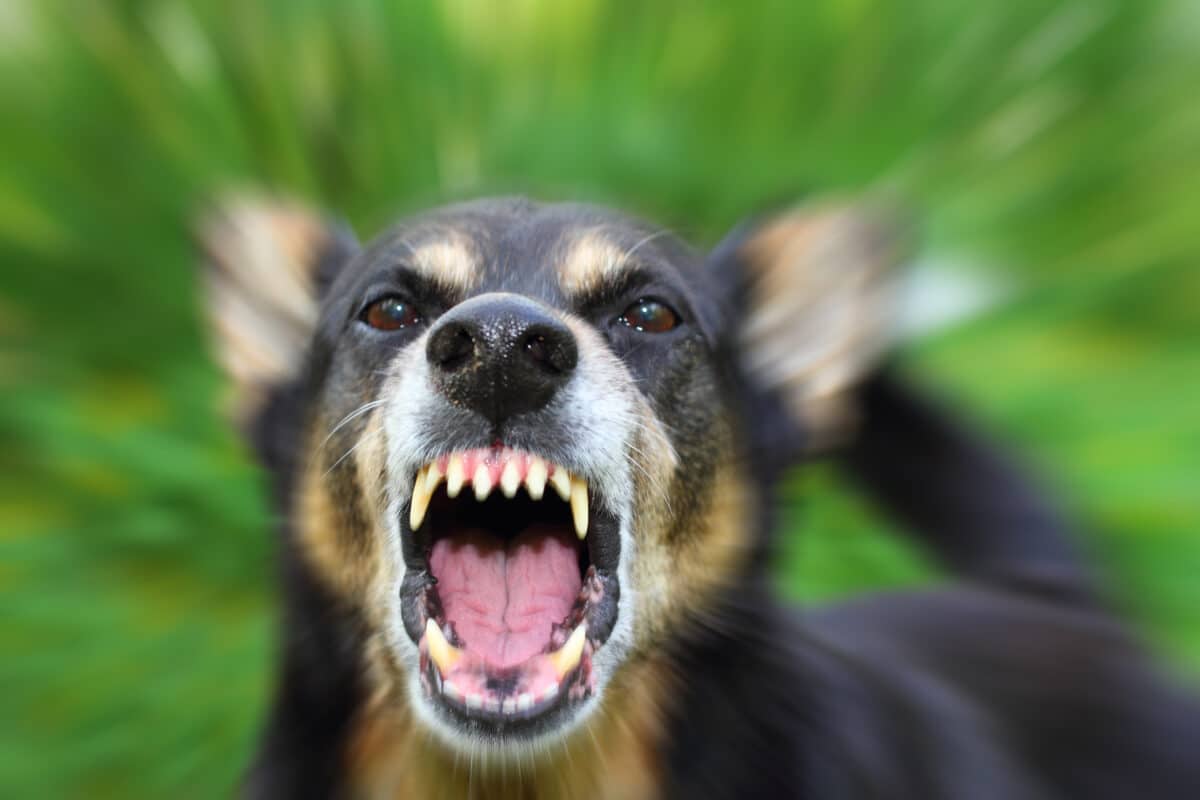Dog Aggression, Dog Aggression Training, Reactive Dog Training, Reactive Dogs
Reactive Dog Training: How to Manage Your Aggressive Dog
Reactive Dog Training: How to Safely Manage Your Aggressive Dog
By Will Bangura M.S., CBCC-KA, CPDT-KA (Dog Behaviorist), Certified Dog Behavior Consultant
Reactive dog training is important for all dog owners, especially those with aggressive dogs. While it is true that all dogs can be trained, aggressive dogs require special attention and handling. It is essential to learn how to identify the signs of aggression and how to properly manage and train your dog to ensure its safety and the safety of those around them. In this article, we will look at what reactive dog training is, the different types of aggressive dogs, what makes a dog reactive and aggressive, and how to train your dog to stop their aggressive behavior.
What is Reactive Dog Training?
Reactive dog training is a type of training that focuses on teaching dogs to react appropriately to different situations. It is based on the principles of reward-based training, where dogs are rewarded for good behavior and taught to recognize and respond to positive reinforcement. Reactive dog training also teaches dogs to respond to commands, recognize and obey boundaries, and develop impulse control.
The main goal of reactive dog training is to make the dog a calmer, more relaxed, and better-mannered pet. This type of training is especially important for aggressive dogs, as they need to learn to control their impulses and respond to commands.
Types of Aggressive Dogs
When it comes to aggressive dogs, there are several different types. Some of the most common types of aggressive dogs include:
- Fear Aggression: This type of aggression occurs when a dog is scared or feels threatened. It is usually seen in dogs that have been abused or neglected, and it is important to address this type of aggression quickly and appropriately.
- Territorial Aggression: This type of aggression occurs when a dog feels that their territory is being invaded. It is common in dogs that have not been properly socialized and can be dangerous if not addressed.
- Possessive Aggression: This type of aggression occurs when a dog becomes possessive over something, such as a toy or food. Dogs can become aggressive if they feel their possessions are being taken away.
- Dog-to-Dog Aggression: This type of aggression occurs when a dog is aggressive toward another dog. It is usually seen in dogs that have not been properly socialized and can be dangerous if not addressed.
What Makes a Dog Reactive and Aggressive?
Several factors can contribute to a dog becoming reactive and aggressive. Some of the most common causes of aggression in dogs include:
- A history of abuse or neglect: Dogs that have been abused or neglected can become aggressive due to their past experiences.
- Fear: Dogs can become aggressive when they are scared or feel threatened.
- Lack of socialization: Dogs that have not been properly socialized can become aggressive toward other animals or people.
- Genetics: Some breeds of dogs are more prone to aggression than others.
- Health and nutrition: A lack of proper nutrition or health issues can contribute to aggression in dogs.
- Territorial/Protective: Some dogs may become aggressive if they feel their territory or their family is being threatened.
Teaching Your Dog Not to Be Aggressive
The first step in teaching your dog not to be aggressive is to identify the underlying cause of their aggression. Once you have identified the cause, you can begin addressing it through reward-based training.
When your dog is exhibiting signs of aggression, it is important to remain calm and not react in a negative way. Instead, use positive reinforcement to reward your dog for displaying good behavior. This can include treats, verbal praise, and physical affection.
It is also important to be consistent in your training and to set clear boundaries for your dog. This will help them understand what is expected of them and will help them learn to control their impulses.
Training Tips for Aggressive Dogs
When it comes to training an aggressive dog, there are several tips that can help make the process easier. Some of these tips include:
- Make sure to use positive reinforcement when training your dog. This means rewarding your dog for good behavior and ignoring bad behavior.
- Be consistent in your training and set clear boundaries for your dog. This will help them understand what is expected of them and will help them learn to control their impulses.
- Give your dog plenty of exercises and mental stimulation. This will help them to release any pent-up energy and will help them to stay calm and focused.
- Use a muzzle for safety when necessary. This will prevent your dog from biting or snapping at people or other animals.
- Seek professional help if your dog’s behavior does not improve. A professional dog trainer or a dog behaviorist to help you to understand and address the underlying causes of your dog’s aggression.
How to Stop Aggressive Dog Behavior
Once you have identified the underlying cause of your dog’s aggression, you can begin to address it in a positive way. Here are some tips for how to stop aggressive dog behavior:
- Make sure to use positive reinforcement when training your dog. This means rewarding your dog for good behavior and ignoring bad behavior.
- Be consistent in your training and set clear boundaries for your dog. This will help them understand what is expected of them and will help them learn to control their impulses.
- Give your dog plenty of exercises and mental stimulation. This will help them to release any pent-up energy and will help them to stay calm and focused.
- Use a muzzle for safety when necessary. This will prevent your dog from biting or snapping at people or other animals.
- Avoid punishing your dog for its aggressive behavior. This can worsen the problem and cause your dog to become even more aggressive.
- Seek professional help if your dog’s behavior does not improve. A professional dog trainer or behaviorist can help you to understand and address the underlying causes of your dog’s aggression.
Dog Training for Aggressive Dogs
When it comes to training an aggressive dog, it is important to use reward-based training. This means rewarding your dog for good behavior and ignoring bad behavior. It is also important to be consistent in your training and to set clear boundaries for your dog.
Giving your dog plenty of exercise and mental stimulation is also important. This will help them to release any pent-up energy and will help them to stay calm and focused.
It is also important to avoid punishing your dog for its aggressive behavior. This can worsen the problem and cause your dog to become even more aggressive.
How to Manage Possessive Aggression in Dogs
Possessive aggression in dogs is a common problem and can be dangerous if not addressed properly. The key to managing possessive aggression in dogs is to identify the underlying cause and then address it in a positive way.
It is important to give your dog plenty of exercises and mental stimulation. This will help them to release any pent-up energy and will help them to stay calm and focused.
It is also important to avoid punishing your dog for its aggressive behavior. This can worsen the problem and cause your dog to become even more aggressive.
It is also important to set clear boundaries for your dog and to be consistent in your training. This will help them understand what is expected of them and will help them learn to control their impulses.
Can Aggressive Dogs Be Trained?
The answer to this question is yes; aggressive dogs can be trained. With the right training, an aggressive dog can learn to control their impulses and respond to commands. It is important to use reward-based training and to be consistent in your training. It is also important to seek professional help if your dog’s behavior does not improve.
Conclusion
Reactive dog training is important for all dog owners, especially those with aggressive dogs. It is essential to learn how to identify the signs of aggression and how to properly manage and train your dog to ensure its safety and the safety of those around them. This article has looked at what reactive dog training is, the different types of aggressive dogs, what makes a dog reactive and aggressive, and how to train your dog to stop their aggressive behavior.
It is important to seek professional help if you have an aggressive dog. A professional dog trainer or behaviorist can help you to understand and address the underlying causes of your dog’s aggression.


